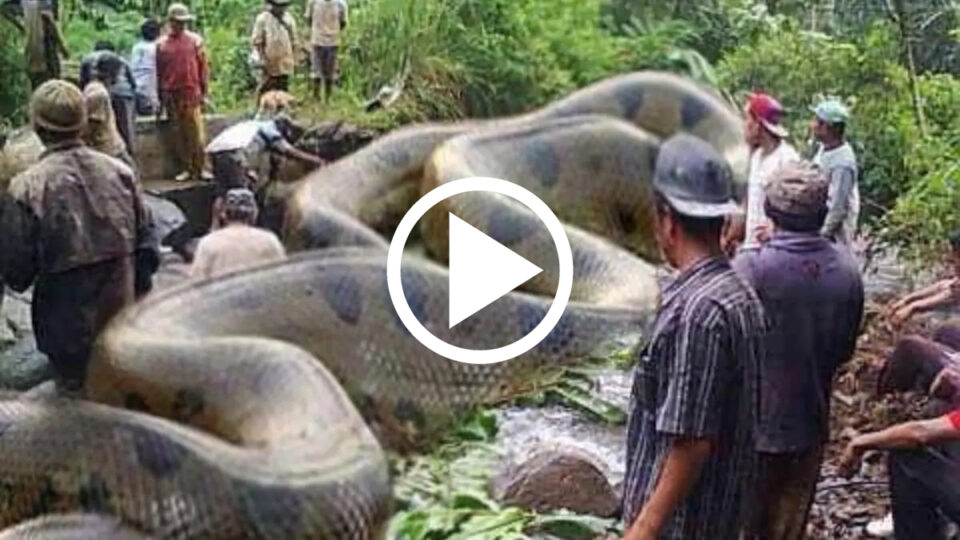Most people are afraid of snakes no matter how big they are. But there are a handful of snake species that can grow to immense proportions.
The longest of them, pythons, can stretch well beyond the length of George Washington’s 21-foot nose on Mount Rushmore, and there is anecdotal evidence of some specimens reaching 33 feet, or nearly as long as a telephone pole.
In 2017, the body of a palm fruit farmer in Indonesia was found inside a 23-foot-long python. It’s time to get your bazooka and join us as we count down 15 biggest snakes ever found in the world.
Carpet Python Number 15 on our list is the Carpet Python. The Carpet python is a large snake named for beautiful markings on its skin, which resemble an oriental carpet pattern.
Their coloring is highly variable, ranging from olive to black with white or cream and gold markings.
The patterning may be roughly diamond-shaped or have intricate markings made up of light and dark bands on a background of gray or a version of brown.
Males in this species are typically smaller than females and, in some regions,, females can even be up to four times heavier.
Carpet pythons are seminar boreal tree snakes; they do not completely rely on trees and are capable of moving around elsewhere.
They are largely nocturnal, climbing trees and shrubs, and crossing open areas such as rock faces, forest floors, and even roads.
However, during the day they may be seen basking in the sun. They usually shelter in hollow tree limbs, rock crevices and even in abandoned burrows of other animals.
Carpet pythons are solitary creatures and only come together to breed. Carpet pythons are carnivores. Their diet consists mainly of small mammals, birds, and lizards. Little is known about the mating system in Carpet pythons.
They breed from October to mid December. These snakes are oviparous. Females lay 10-50 eggs at a time and incubate them around 40 days.
Females coil around the eggs to protect them and keep them warm through using muscular contractions to generate heat.
This type of maternal care, which is typical for pythons, ceases once the hatchlings have emerged. Hatchlings measure around 39 cm and become reproductively mature when they are around 3 years old.
Boa Constrictors Number 14 on our list is the Boa Constrictor. The Boa constrictor is a species of large, nonvenomous, heavy-bodied snakes that is frequently kept and bred in captivity.
The coloring of Boa constrictors can vary greatly depending on the locality. However, they are generally brown, grey, or cream base color, patterned with brown or reddish-brown “saddles” that become more pronounced towards the tail.
Their coloring works as very effective camouflage in the jungles and forests of their natural range.
Female Boa constrictors are generally larger in both length and girth than males. Boa constrictors generally live on their own and do not interact with any other snakes unless they want to mate.
They are nocturnal, but they may bask during the day when night-time temperatures are too low. As semi-arboreal snakes, young Boa constrictors may climb into trees and shrubs to forage; however, they become mostly terrestrial as they become older and heavier.
They are very capable swimmers. Boa constrictors often occupy the burrows of medium-sized mammals, where they can hide from potential predators.
These snakes strike when they perceive a threat. Their bite can be painful, especially from large snakes, but is rarely dangerous to humans.
Like all snakes, Boa constrictors in a shed cycle are more unpredictable, because of the substance that lubricates between the old skin and the new one.
It makes their eyes appear milky, blue, or opaque so that the snake cannot see very well, causing it to be more defensive than it might be otherwise.
Boa constrictors are ambush predators, so often lie in wait for an appropriate prey to come along, when they attack.
However, they do hunt, particularly in regions with a low concentration of suitable prey and hunting generally occurs at night.
The boa first strikes at the prey, grabbing it with its teeth; it then proceeds to constrict the prey until death before consuming it whole. Boa constrictors are carnivorous creatures.
Their diet includes a wide variety of small to medium-sized mammals and birds. They mainly feed on rodents, but may also hunt larger lizards and mammals as big as ocelots.
Young boa constrictors eat small mice, birds, bats, lizards, and amphibians.


